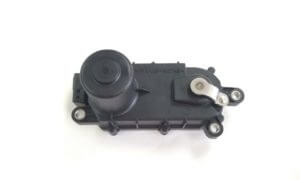Dealing with the Hyundai P200A Code: Common Causes
How to Fix the Hyundai P200A Trouble Code
The Hyundai P200A code indicates an issue with the intake manifold runner performance. Specifically, it pertains to the intake manifold runner control (IMRC) system, which plays a crucial role in optimizing the air-fuel mixture for efficient combustion. When this system fails or malfunctions, the engine may not run as smoothly or efficiently, leading to poor performance, reduced fuel efficiency, and potential engine damage if not addressed promptly. In this article, we’ll delve into the causes, symptoms, diagnostic steps, and solutions for fixing the Hyundai P200A code.
Hyundai has issued a service bulletin # 16-01-004-2 to address the issue on the 2.4 GDI equipped vehicles listed below. Here’s how to deal with the problem.
Hyundai service bulletin #16-01-004-2
Hyundai has issued a software update to deal with a Hyundai P200A code (Intake Manifold Runner Performance – Bank 1) trouble code. In addition to the check engine light, you may also notice a slight hesitation or reduced power during acceleration, an automatic transmission upshift hesitation during acceleration, and a clicking noise from the intake manifold VCM (Variable Charge Motion) actuator when the engine RPM is increased.
In the 2015 Hyundai model years, you may also encounter a P0605 Engine Control Module – ROM Error with the electronic Stability Control (ESC) Warning Light ON and limited engine power (“Limp Home”) mode.
Vehicles affected by Hyundai service bulletin #16-01-004-2
2015-16 Hyundai Sonata vehicles with the 2.4L GDI engine
How to fix a Hyundai P200A code

Variable charge motion activator
The service bulletin advises checking the variable charge motion activator (VCM) to determine if it’s working properly. To do that, check the actuator sensor voltage on terminal 5 at the VCM connector with the engine running. As you raise and lower the RPM, the voltage should change from 1.8 volts to around 3 volts with no abnormal noises.
Set your meter to measure pulse width if the voltage doesn’t change. Then connect to the VCM terminal at the PCM terminal 1 (red) and terminal 3 (black). Raise and lower RPM and look for a change in pulse width. If you see a change in pulse width with no abnormal noises, the problem is with the VCM. Replace with updated Hyundai part #28323-2GGA1.
If you hear abnormal noise, replace the VCM.
Update the ECM software to the latest version.
Clear adaptive memory
©. 2019 Rick Muscoplat
Posted on by Rick Muscoplat
